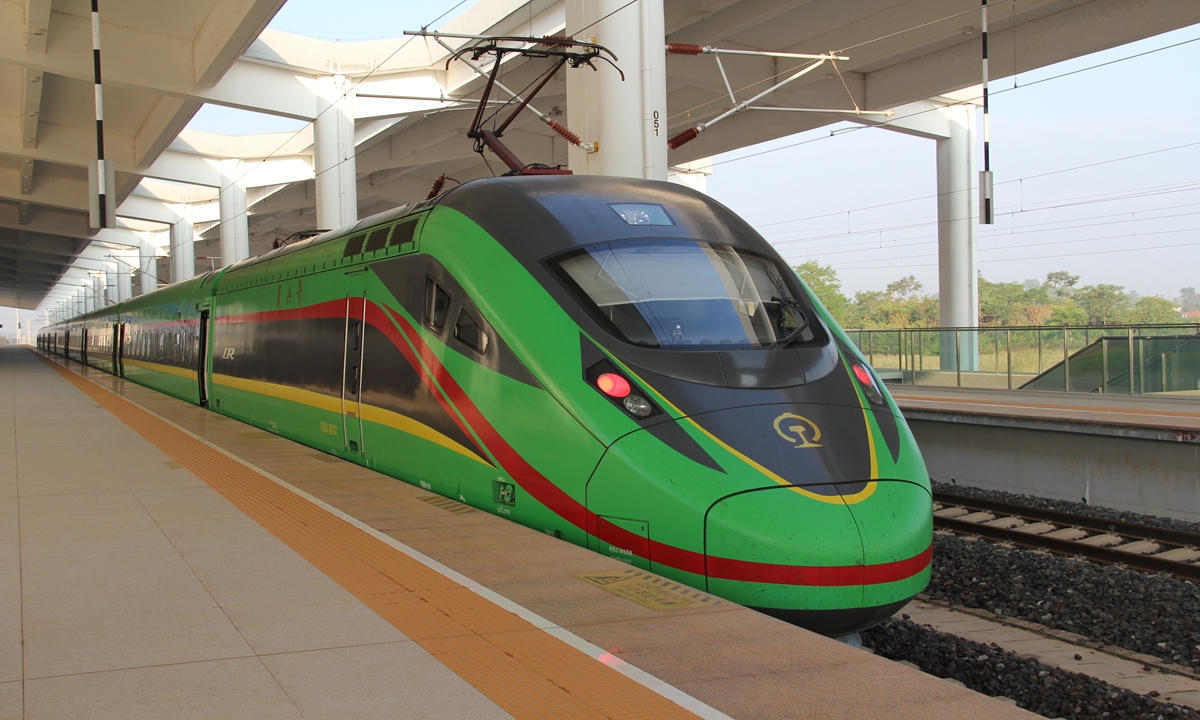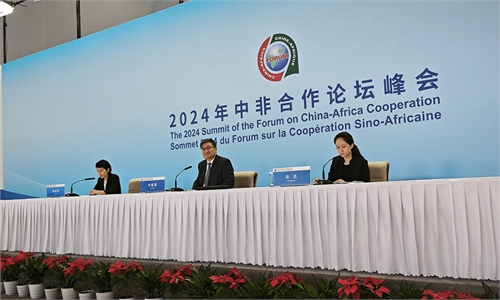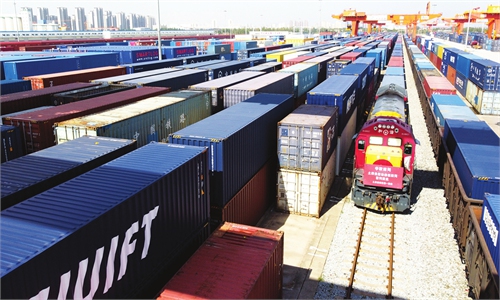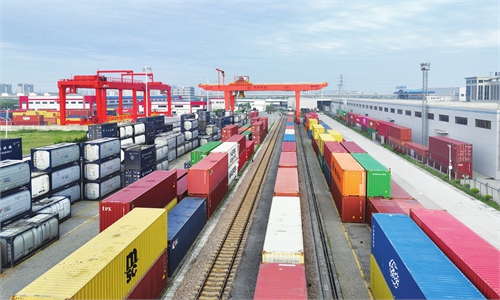China-Laos Railway handles more than 10m tons of goods since opening, underscoring increasing China-ASEAN cooperation

A China-Laos Railway passenger train bound for the Lao's tourist destination Luang Prabang awaits departure from Lao capital Vientiane on November 28, 2023. Photo: Wang Qi/GT
The China-Laos Railway handled more than 10 million tons of goods as of Monday worth 40.77 billion yuan ($5.76 billion) since its opening on December 3, 2021, the Xinhua News Agency reported, citing local authorities.
In the first eight months of 2024, the line's total freight volume was up 22.8 percent year-on-year at 3.58 million tons, valued at 12.38 billion yuan, a rise of 56 percent.
The line now carries about 3,000 types of goods, up from the initial 500, offering a convenient channel for transporting popular products such as China-made mechanical and electrical items and agricultural products, as well as natural rubber and tropical fruits from Laos and Thailand.
The China-Laos Railway has a demonstration effect while playing a significant role in speeding up cargo transportation, especially for goods from Laos and Thailand, Xu Liping, director of the Center for Southeast Asian Studies at the Chinese Academy of Social Sciences, told the Global Times on Wednesday.
In addition to promoting regional economic integration and connectivity, the railway has propelled local economies by creating jobs and advancing industrial development in many sectors from manufacturing to logistics, according to Wang Peng, an associate research fellow at the Beijing Academy of Social Sciences.
The railway's bustling operation vividly demonstrates the continuously enhanced ties between China and ASEAN. Experts expect cooperation to deepen in emerging sectors following the upcoming China-ASEAN Expo, which will be held in Nanning, South China's Guangxi Zhuang Autonomous Region, from September 24 to 28.
Wang and Xu highlighted the cooperation potential in sectors such as the digital and green economies, amid existing strong cooperation in industrial and supply chains.
In relation to the digital economy, Xu said that cooperation potential can be unleashed in the construction of smart cities and the digital transformation of small and medium-sized enterprises.
As for the green economy, Wang told the Global Times on Wednesday that the two sides can step up exchanges in new energy, environmental protection and green manufacturing.



